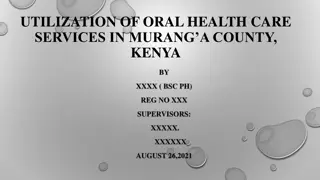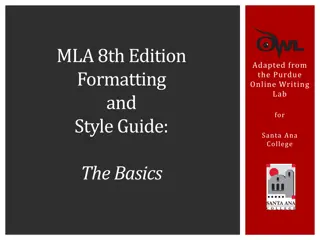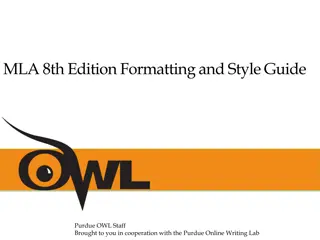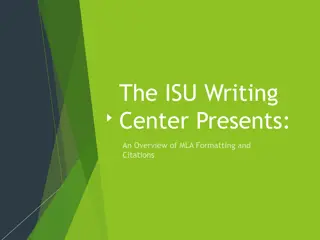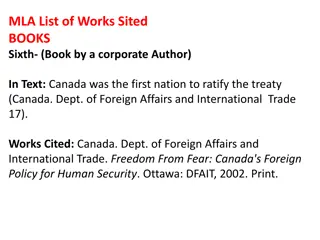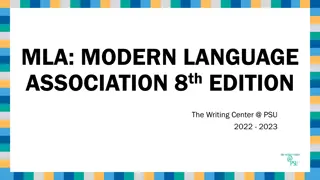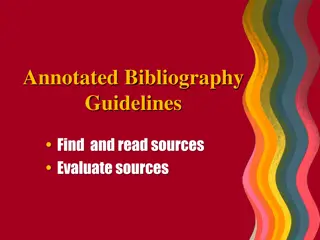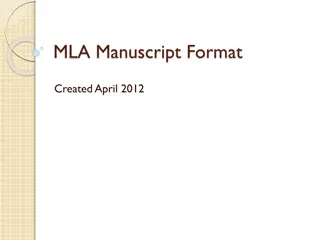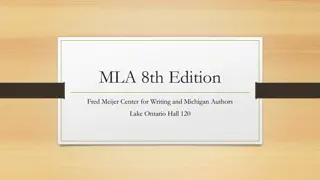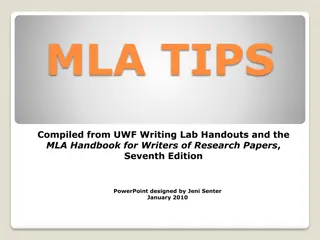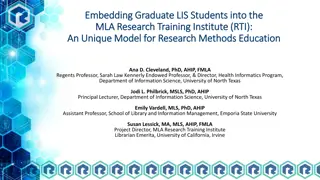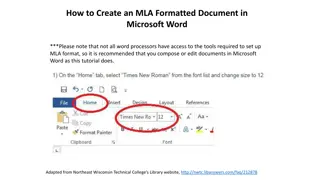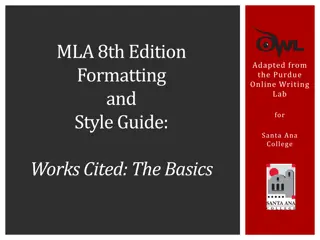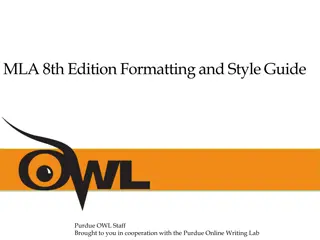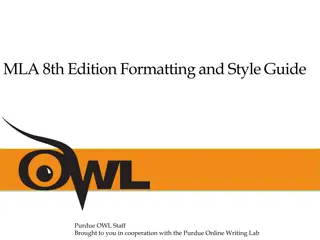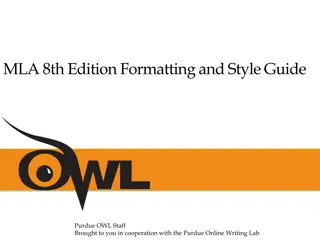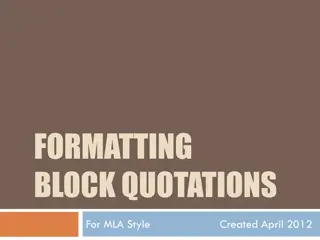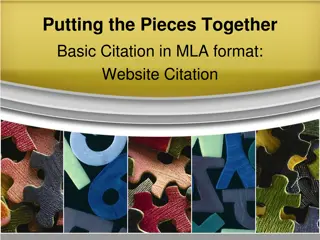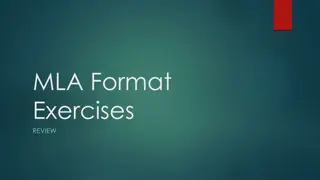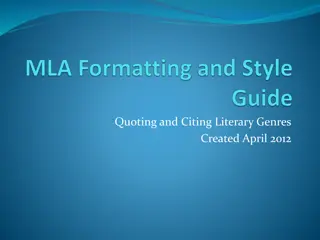Effective Utilization of Sources in MLA Style for Research Projects
This comprehensive guide provides step-by-step instructions on how to effectively use and document sources in MLA style for research projects. From understanding your research title to documenting direct quotations and long quotations, this resource covers essential strategies for organizing and incorporating sources into your academic work.
Download Presentation

Please find below an Image/Link to download the presentation.
The content on the website is provided AS IS for your information and personal use only. It may not be sold, licensed, or shared on other websites without obtaining consent from the author.If you encounter any issues during the download, it is possible that the publisher has removed the file from their server.
You are allowed to download the files provided on this website for personal or commercial use, subject to the condition that they are used lawfully. All files are the property of their respective owners.
The content on the website is provided AS IS for your information and personal use only. It may not be sold, licensed, or shared on other websites without obtaining consent from the author.
E N D
Presentation Transcript
Research Projects Amjed Lateef Jabbar Ph.D. in English Literature Google Classroom (Research Projects) Class Code (z4fp54j)
First Steps 1. Understand your research title. 2. Read generally and roughly (google search) to understand what your paper will talk about and deal with. 3. Collect and compile sources (books, articles, essays etc.). 4. It is very important to make a (research plan) in which you divide your paper into chapters and sections. 5. Now read your sources, use a pencil to make notes of what you will include in each chapter.
How to use your sources 1. When you directly quote from sources without any change, use short quotations with quotation marks . for quotations less than four lines. 2. For direct quotations of four lines or more, use block (long) quotations without quotation marks. 3. Understand the ideas mentioned in the sources, then, paraphrase them in your own words. 4. Sometimes use your own analysis even if without sources.
How to document your sources inside your research body in the MLA style: 1. For direct, short quotations (less than 4 lines), use quotation marks followed by the writer s last name and page number only. Example 1: According to some, dreams express "profound aspects of personality" (Foulkes 184), though others disagree. Example 2: According to Foulkes's study, dreams may express "profound aspects of personality" (184).
2. When using short (fewer than three lines of verse) quotations from poetry, mark breaks in verse with a slash, ( / ), at the end of each line of verse (a space should precede and follow the slash). If a stanza break occurs during the quotation, use a double slash ( // ). Example: Cullen concludes, "Of all the things that happened there / That's all I remember" (11-12).
3. For direct, long quotations (4 lines or more), put the quotation in the middle of your research text followed by the writer s last name and page number between two brackets, without quotation marks. Example:
4. When citing long sections of poetry (four lines of poetry or more), keep formatting as close to the original as possible. Example: In his poem "My Papa's Waltz," Theodore Roethke explores his childhood with his father: The whiskey on your breath Could make a small boy dizzy; But I hung on like death: Such waltzing was not easy. We Romped until the pans Slid from the kitchen shelf; My mother's countenance Could not unfrown itself. (Shugrue 202)
Citing web pages in the text: 1. If the author is known, cite as the following example: Parents play an important role in helping children learn techniques for coping with bullying (Kraiser). 2. If the author is not known, you mention the title of the essay like: The term Nittany Lion was coined by Penn State football player Joe Mason in 1904 ("All Things Nittany").
How to make references at the end of your research paper? 1. books: Thomas, Holly K. Training Strategies for Improving Listeners' Comprehension of Foreign-accented Speech. University of Colorado, Boulder, 2004. 2. Journal articles: Derwing, Tracey M. "Teaching Native Speakers to Listen to Foreign-accented Speech." Journal of Multilingual and Multicultural Development, vol. 23, no. 4, 2002, pp. 245-259. 3. Web pages if the author is mentioned: Kraizer, Sherryll. Safe Child. Coalition for Children, 2011, www.safechild.org. 4. Web pages if the author is not mentioned: "All Things Nittany." About Penn State. Penn State University, 2006, www.psu.edu/ur/about/nittanymascot.html.
If you have any inquiries, questions, or notes, please do not hesitate nor feel shy to post them IN your Google Classroom. Good Luck



